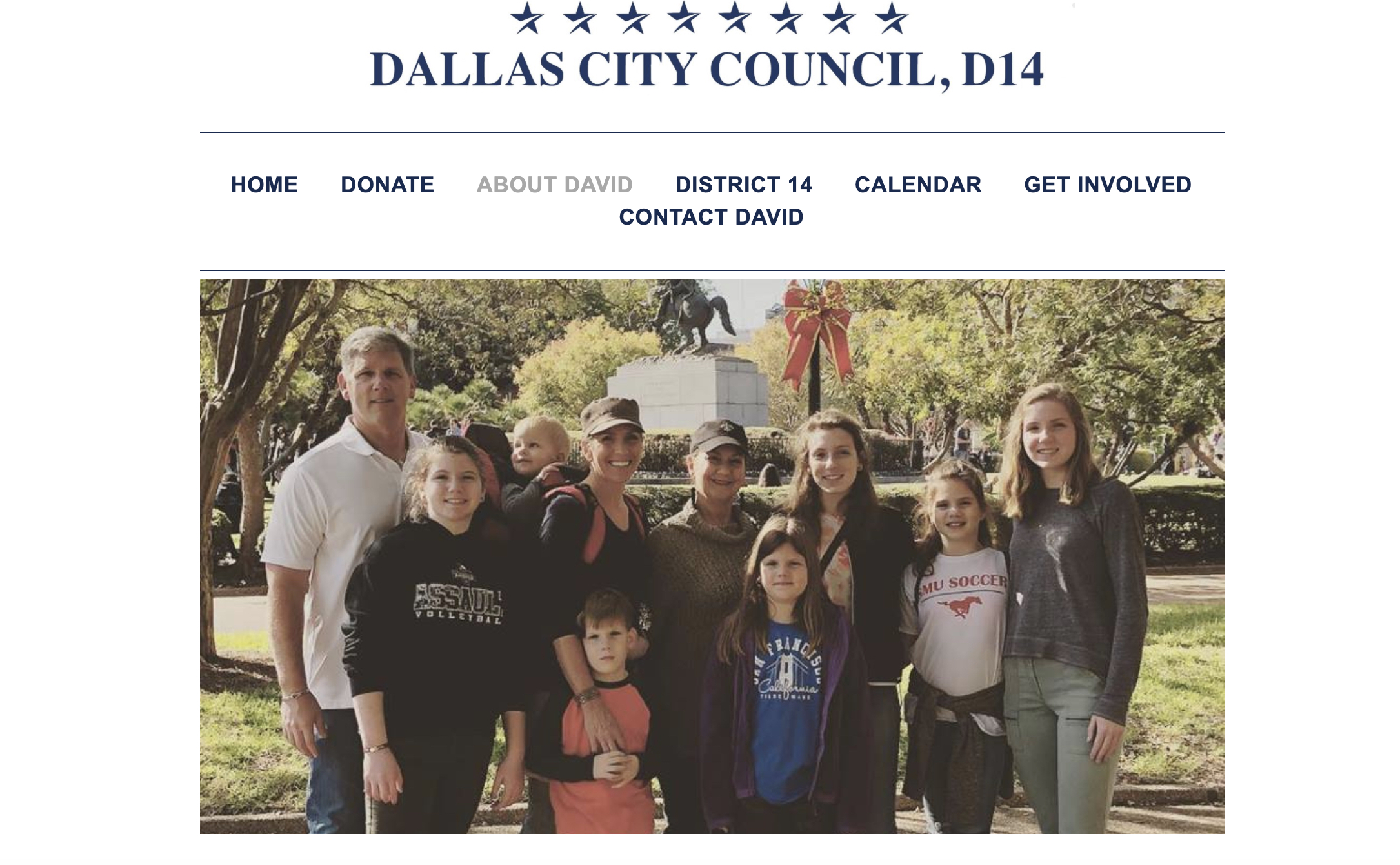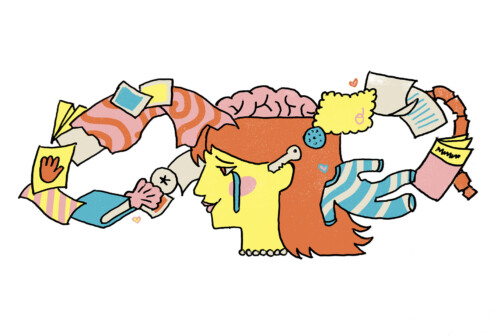Councilman David Blewett represents the oddly shaped District 14, which encompasses parts of East Dallas and Uptown. The accepted wisdom is that he beat incumbent Philip Kingston because Kingston was a jerk, not to put too fine a point on it. But no one has ever said Kingston lost because he was thick. Dude might have driven a yellow Lotus (ick), sure. He otherwise had a good head on his shoulders.
Which brings me to an op-ed published today by his replacement, Blewett. In it, he argues for the reopening of our local economy. He wrote this before the county’s new order, just issued, calling for quarantine till May 15. So Blewett was a little off-base. Just how far? I’ll break down his op-ed below. Bear in mind: I think I agree with him — more or less. We have such a paucity of data that I think it’s possible half the damn city has already been exposed to coronavirus. I really don’t know. Nor does anyone else. And in this state of ignorance, I think it’s reasonable to have a conversation about people leaving their houses. Wear a mask, wash your hands, don’t touch your face, and stay away from your fellow citizens. Maybe that regimen, strictly followed, can get things moving again.
But that is not the argument Councilman Blewett made. The text, with my comments:
***
By David Blewett
I am proud of Dallas residents and how we have calmly responded to the COVID-19 viral outbreak. [Totally. Me, too. Except for the bastards at my grocery store who can’t observe one-way signs in the aisles and the folks who came up with the surname rule for the Katy Trail.] It has been hard to hear from so many how difficult these past weeks of quarantine and economic shutdown have been. But I believe the shutdown was necessary until we could better understand the threat. [High-five. From a distance.]
The thing that strikes me the most about COVID-19 is how much we didn’t know when it first came to our attention in March. [March? Um. Do you read things at at all?] On one hand, we had access to incredible information and modeling from health professionals that predicted significant infection and mortality rates. On the other hand, testing was almost nonexistent in the U.S. and foreign reporting was opaque, so the data was [were] imperfect and frequently changed. [A set of data can be shy of complete. But if they are accurate, data don’t change. Just saying. Is your back end starting to get a little loose?]
Dr. Philip Huang, director of Dallas County Health and Human Services, has been very clear in his council briefings that closing nonessential businesses and sheltering in place were not implemented to prevent infections from COVID-19; they were designed to prevent our health care system from becoming overburdened. [Good. Back on track.] An overburdened health care system could have led to increased deaths.
We have all been affected by the government restrictions that were enacted. Students have become de facto home-schoolers. We have shut down significant portions of our economy. Unemployment has gone up significantly — projections suggest we will reach levels in April comparable to the Great Depression — and will continue to do so. [Ugh. It’s horrible. You’re right.]
This cannot last. [Well. I mean. Yeah. It could get worse.]
“Flattening the curve” was about keeping the curve below the line that represented our health care capacity. [Nailed it.] Thankfully, we have begun to get the information needed to make sure our health care system will not be overburdened and that those who are infected will get care. [WHOAH. What just happened? What about the imperfect and frequently changing (though always plural) data? That’s the whole thing, man. We still don’t know how many people have been infected. What’s the dang denominator?] We have data that shows [show] how many have symptoms serious enough for hospital admission. [Please cite source.] We see how many of us are asymptomatic or have flu like symptoms and can go home. [Please cite source.] We know who is the most vulnerable and needs the most protection. [Please cite source.] And we can count how many available hospital beds and ventilators are in reserve if ICU cases should spike. [OK, true.]
We can also see that the curve itself is not the size that was predicted. [What the what? “The curve itself is not the size that was predicted”? What the heck are you talking about? A curve doesn’t have a “size.” Let’s start there. But the bigger thing here is that you seem to be saying that our social-distancing measures have worked, therefore we didn’t need to social distance. Surely you’re not saying that. Right?] And further, while we were waiting for the predicted peak, our health care system had time to build up. The result is a system operating at 30% to 50% of its capacity and facing a much-diminished peak. [Oh, you ARE saying that. Wow.] Thus, it would seem we can loosen governmental restrictions to allow more freedom of movement without threatening our health outcomes. [Let me see if I understand. Our actions helped slow the spread of the virus. So we don’t need to continue those actions. This is like saying, “We used a condom to have sex 10 times and didn’t get pregnant. Clearly we don’t need to use a condom!”]
Am I proposing that we end the emergency orders and open our economy all at once? Of course not. [Brilliant use of rhetorical question and answer, Councilman!] That would reverse the progress we’ve made. I am proposing we open more of our businesses in stages over a reasonable amount of time in order to prevent the onset of irreparable economic damage. [This makes my head hurt. Because despite the forgoing, right here I think I might agree with Blewett. Maybe. At least I want to talk about this idea.]
We have the data to manage the curve, not just flatten it. [Whoah, whoah, WHOAH! How is “management” different from “flattening”? If we flatten the curve, are we not managing it? To put it in other words, if we use condoms, are we not using condoms?] Maybe we decide 80% ICU bed utilization is a number that doesn’t overburden our health care system and use that as a benchmark. [Literally, 80 percent would not overburden our healthcare system. That’s how percentages work. If it were 110 percent, THAT would overburden. It’s math.] Maybe we open our restaurants and bars at 50% of occupancy or for limited hours. Maybe we require more stringent health precautions as we open other businesses. I am not a health care professional, but I know there are experts who can make adjustments that will allow us to manage the burden in a more effective manner. [And those experts have all said we need to NOT do everything you’re suggesting. I mean, just for the record.]
Pressure on our society is building, and sheltering in place in conjunction with closing all nonessential businesses week after week was never a long-term solution. [No one suggested it was.] The question has always been when we would understand this new virus enough to be able to change tactics. [Pow! Love this sentence. The question is when we understand this virus. Councilman Blewett, we don’t have enough data to say we have that understanding.] I think we have reached that point. [No.] Add in the spare capacity we have built up in our health care system, and we have even more flexibility to ease those initial restrictions. [[hangs head in sorrow and disbelief]]
This crisis and its aftermath are tests, and we must meet them head-on. It is time for us to move from the blanket shutdown toward a more targeted response that begins to open the economy back up, a response that more accurately aligns with the reduced threat COVID-19 presents to our more than capable health care system. [Damn the torpedoes! Only inaction can stop us now!]
***
This is me, Tim Rogers, talking to you now. Listen, we don’t know how many people have been exposed and are infected. We don’t know whether antibodies confer immunity — or, if they do, how long that immunity might last. Councilman Blewett is dead wrong when he says we’ve reached the point where we have enough information to act. We don’t.
BUT. But, but, but. Maybe in our ignorance, we can agree to take every step possible — wash hands, wear mask, don’t touch face, don’t hump on the Katy Trail — and start things up again. At least we can have that conversation. The other conversation? The one Councilman Blewett is trying to start, where he claims we have the data to manage the curve, not just flatten it? I don’t even know what language that is.
Good luck, District 14.






